 Reviewed by
Anton Giuroiu
Reviewed by
Anton Giuroiu
The best way to soundproof a room is to use soundproofing materials and techniques along with sound absorbers like acoustic foam, acoustic panels, wall hangings, and furniture. Here it’s important to note that using sound absorbent materials alone is not enough, as they can’t guarantee actual soundproofing.

Getting time alone with your thoughts is a luxury that most people fail to enjoy because of unwanted outdoor noise. To avoid such situations and make your home a safe space to relax and reenergize, consider soundproofing the rooms in your house.
Today's guide looks at some popular techniques for soundproofing a room to help you live comfortably. Most of these are DIY methods, and you won't need many resources.
Cheapest Ways to Soundproof a Room

Soundproofing Basics
Usually, people think that the best way to soundproof a room is to block sound waves, but an effective technique to cut out unwanted noise is to absorb sound. To absorb noise in your apartment, you can implement one or more of the following methods -
- Hanging acoustic panels to soundproof walls
- Sound absorbing foam
- Soundproofing curtains
- Sound-blocking blankets over the bedroom door and other entry points
For the best results, it's important to install the sound-absorbing materials directly in the path of the source to dampen noise. But for a detailed idea of how to soundproof a room from the inside, check out the following points:

1. Source
When thinking about how to soundproof a room, the most important consideration for absorbing sound waves is location. The reason it's recommended to soundproof a room from the inside is that it's easy.
But you must determine whether you are trying to minimize sound coming from just one source, like a TV, or multiple locations. Once you identify the source, minimizing noise by diluting or muting it will be convenient.
2. Point Of Entry
Knowing the point of entry is essential to stop noise from entering the room in the first place. However, to block noise, you need to determine whether the incoming sound comes from adjacent rooms or through the existing walls. This is usually the case in shared apartments or condos having the same wall.
You must also soundproof exterior windows to prevent unwanted sounds from entering the room.
3. Reflection Point
Note that when the incoming sound enters the room, sound reflection occurs at an angle similar to the point of entry. That's why to cut out sound transmission, people sometimes opt for soundproofing walls at the end of the footboard and the entire wall of the headboard.
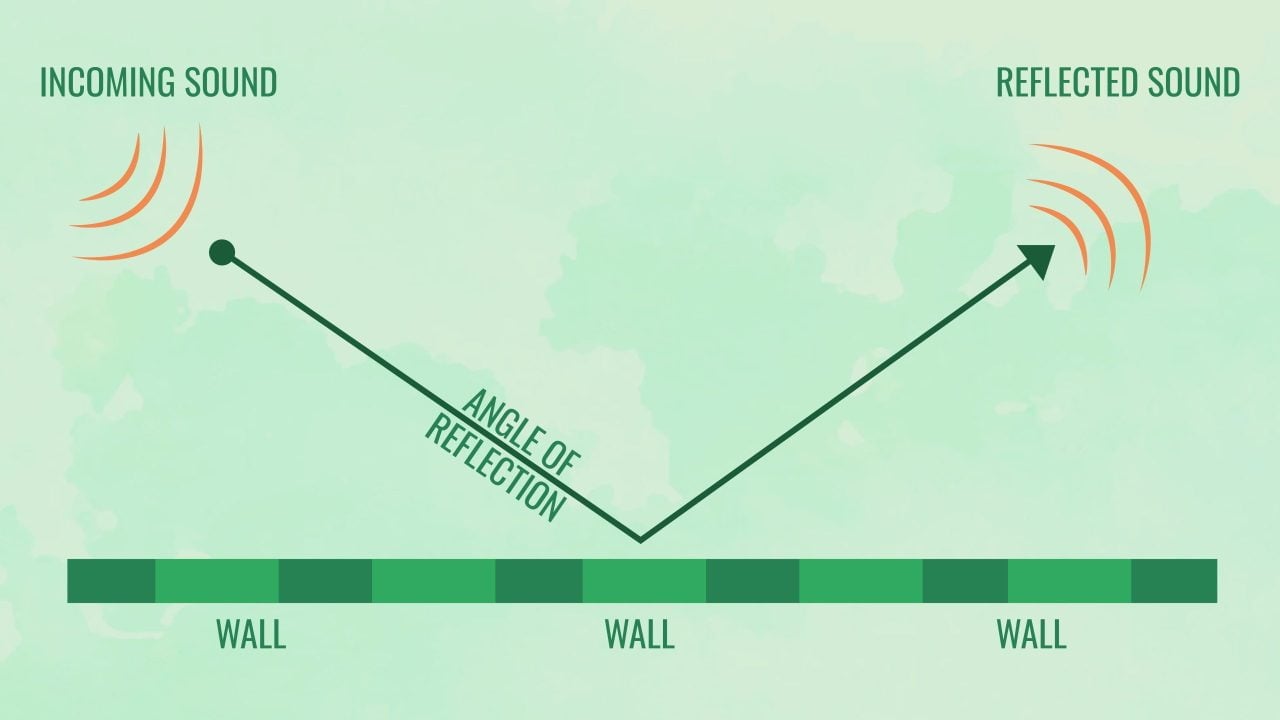
When the angle of entry is a straight line, the sound waves will bounce between the headboard and footboard until they dissipate. Therefore, to absorb sound waves effectively, make sure to soundproof a room based on these 3 points.
How To Soundproof Different Parts Of A Room
For maximum sound reduction in your apartment, there's no need to opt for expensive construction work. I have listed some effective Do-It-Yourself techniques to help cut down on outside noise and enhance absorption (acoustics) within the room.
1. Commercial Acoustic Foam
While many people prefer using egg crate foam for sound absorption, it doesn't possess the required mass to do a good job. That's why I suggest using commercial acoustic foam, which looks similar but delivers better results to reduce noise pollution.
In a music recording studio, it's recommended to have a minimum foam thickness of 2 inches. So, anything less or similar to this should prove ideal for normal soundproofing.
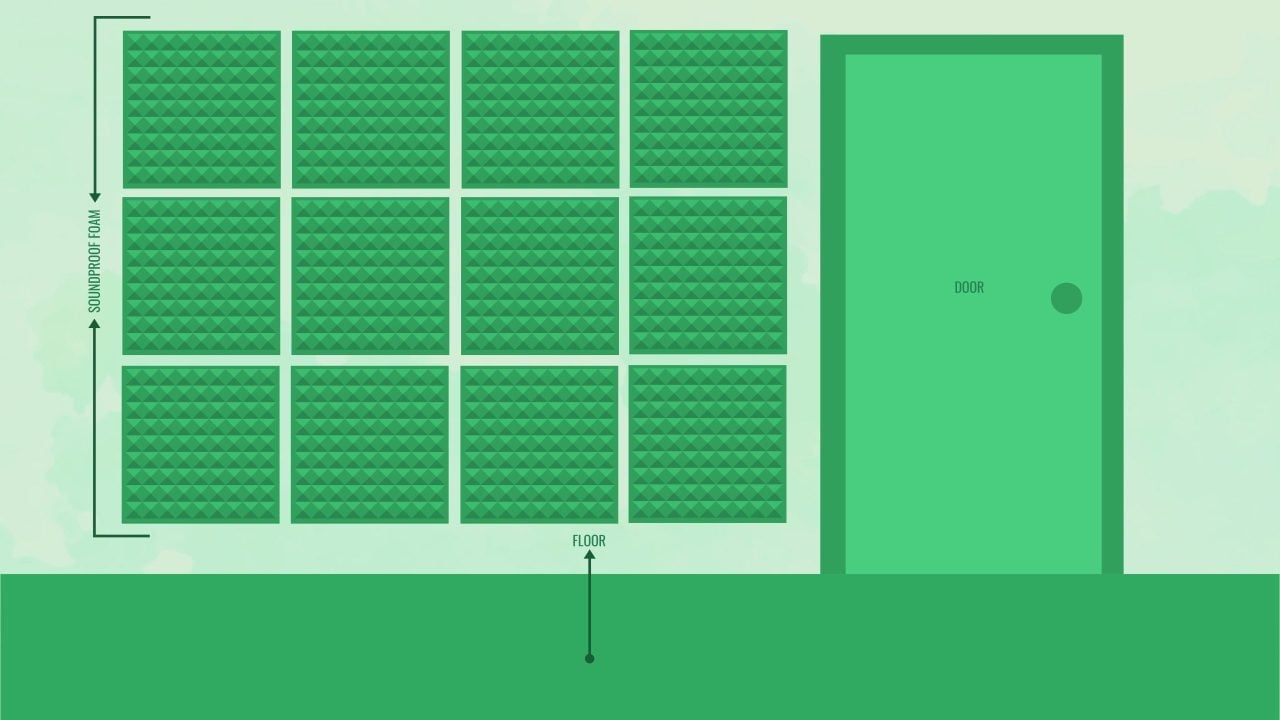
Moreover, the pattern of the acoustic foam panels doesn't impact the effectiveness of acoustic treatment. You can shape the foam in multiple ways, such as egg crate, wavy, mushroom, wedges, and scored squares.
To choose the best soundproofing materials, you need to check the Noise Reduction Coefficient(NRC). It’s a scale between 0 and 1, with 1 being the best soundproofing. In some cases though, I’ve seen results showing higher than 1 for some materials.
This effectively says that the material absorbs more than 100% of the sound. However, these results are usually due to anomalies caused by sample size in the reverb chamber during the test (such as edge absorption).
Depending on the purpose, such as soundproofing a room for watching movies or noise control for gaming, you should know that regular carpeting or foam doesn't absorb frequencies below 250 Hz. For such instances, it would be better to opt for a bass trap for lowering bass sounds, or you can install 4-inch foam.
2. Soundproofing Techniques For Windows
When you want to block sound from filtering into a room, I suggest cutting airborne noise by treating the windows first. Thanks to easy and cost-effective solutions, you can create a tight seal around windows to restrict sound coming from outside.
Although there are several options to choose from, thick curtains and drapes are ideal for soundproofing a room. It becomes easier to absorb sound when you hang heavy curtains with noise-canceling properties or opt for a blackout curtain.
Most importantly, heavy curtains make it easier to trap energy and maintain a comfortable room temperature throughout the year. Some consumers further prefer weather-stripping and use adhesive plastic or rubber to form a tight seal around window borders.
The goal is to block gaps or holes, so air and sound do not get through. You can cut soundproof foam into the desired shape and thickness to fit it into the window frame.
3. Soundproofing Interior Doors
The easiest way to cut out the noise and absorb sound coming from adjacent rooms or outside is to install a soundproof door. But for more affordable solutions, there are several DIY methods you can try.
A. Hardwood Door Slab
You can fit the room with a slab door that's durable, thanks to the solid hardwood construction. There are also hollow units available on the market that are highly cost-effective, but they have poor noise reduction ability compared to hardwood, which is denser.
B. Door Sweep
Another popular method to soundproof wood doors is installing a door sweep made of plastic or rubber at the bottom of the door. This serves the dual purpose of reducing sound and providing insulation, or you can fit door jambs to dampen noise while improving energy efficiency.
C. Caulk
For stubborn sound, an extra layer of caulk around the door frame helps seal the crevasses and seams.
D. Door Seal
You can use weather-stripping to seal the edges around the door frame, so be careful to take accurate measurements and angle the edges where they meet the corners. Moreover, the seal won't cause obstructions when closing the door without compromising on the fit.
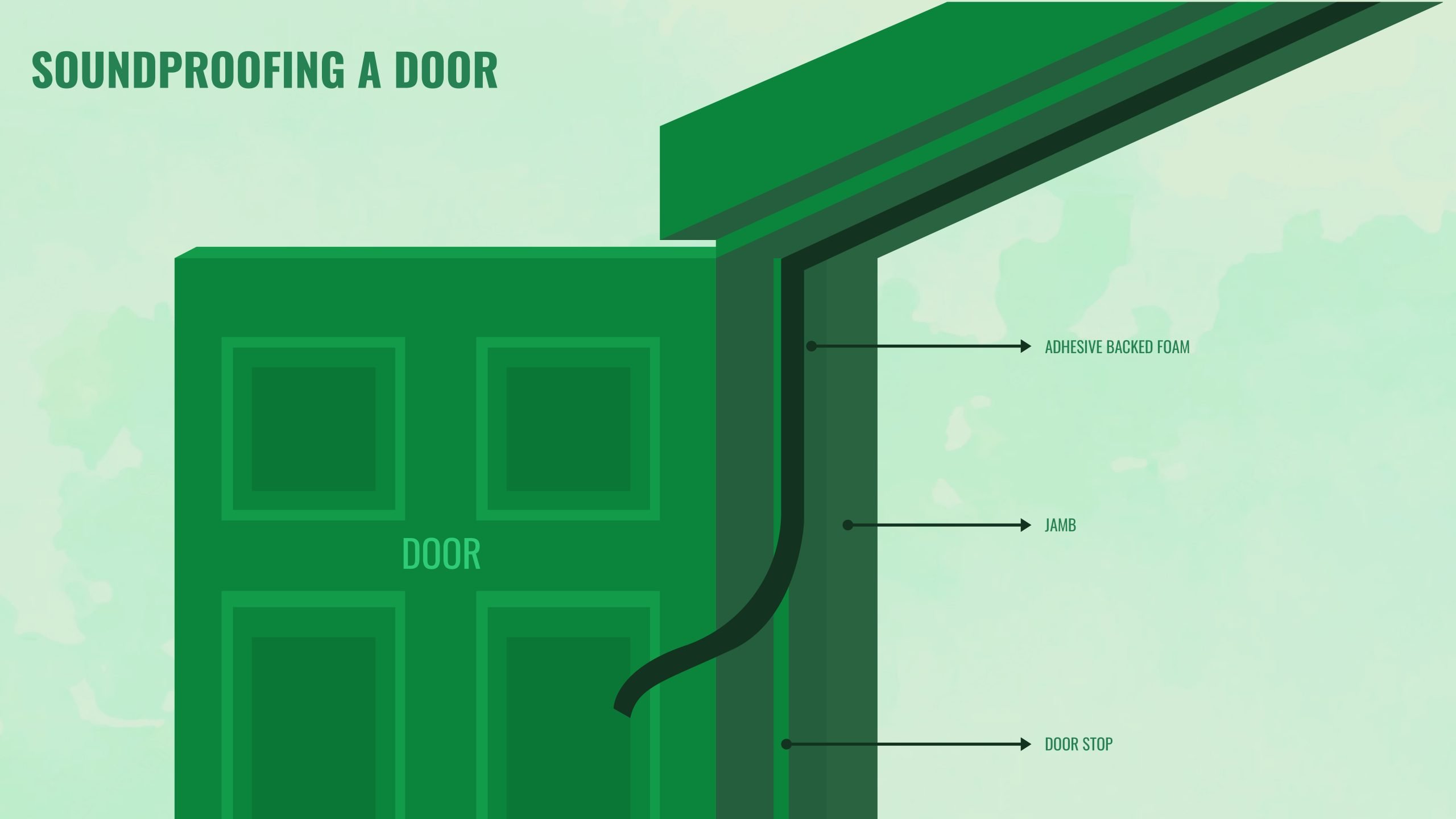
Other than these techniques, you can install acoustic panels by following the steps mentioned below -
- The first step is removing the hinges and doorknob
- Install the foam panel with Impaler clips or an adhesive
- Use a utility knife to trim the panels for sound masking
- Check whether you can install the door hardware or trim further
- Once you are satisfied, install the hardware
- Check if the door opens and closes as usual
4. Soundproofing Floors
Are your downstairs neighbors complaining about a creaky floor or excessive noise? This might be because you have hardwood floors, so a simple technique would be to use commercial floor mats, underlayment, and liners to reduce impact noise.
Carpets and rugs also serve a similar purpose, but a better option is using natural rubber gym flooring, foam tiles, and mats. Such soundproofing methods are most common in home gyms and theaters, lowering disturbance for you and others.
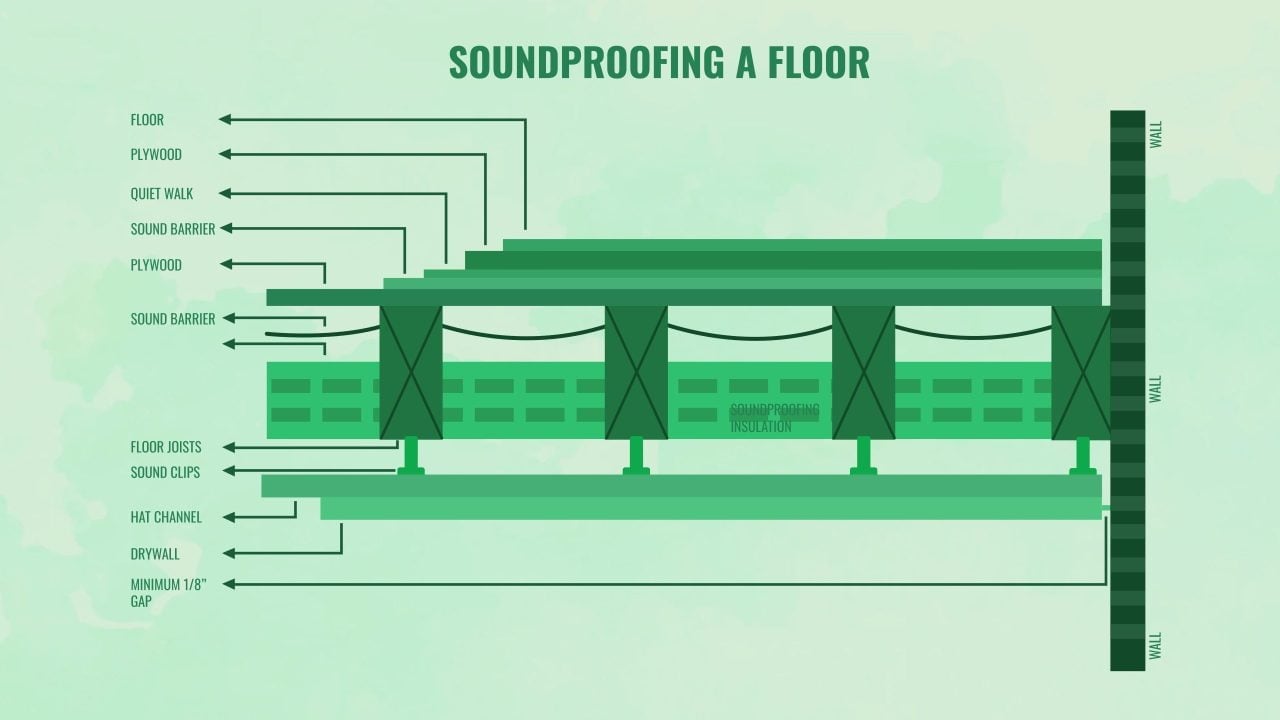
Therefore, it proves convenient to dampen the low frequencies of a sound system or absorb vibration and noise coming from a treadmill. For enhanced soundproofing, you can even add a rug for the second layer of protection against impact noises.
The best part is that rugs and carpeting are budget options that don't require a lot of money or resources. All you need is to use them with a liner, for which soundproofing rug pads and carpet liners come in handy.
But for hard surfaces, installing an underlayment that matches the lamination, hardwood, or foam tiles would be best. However, installing them during a renovation or new construction work would be ideal.
5. Soundproofing Walls
One of the most important things to consider when blocking noise in a room is how to soundproof the existing wall. Compared to other soundproofing methods, absorbing noise through walls is more labor-intensive, especially when you have existing drywall.
But here are some easy methods you should know about -
A. Furniture
Make use of the existing furniture, such as a bookcase or large wardrobe, by pushing them against the wall after locating the source. Since sound absorption increases depending on the mass, using large furniture is ideal.
B. Sealant
A sealant proves useful for tackling minor noise problems, for which you can apply a water-based acoustic sealant to fill the gaps or cracks in walls. You must also use a product with a color similar to the wall to maintain the quality of the interior décor or choose a sealant that permits repainting.
C. Wallpaper
Most people may not be aware, but applying wallpaper is just as good as other soundproofing techniques. Several soundproofing wallpapers are available on the market made from sound-absorbent foam to minimize noise.
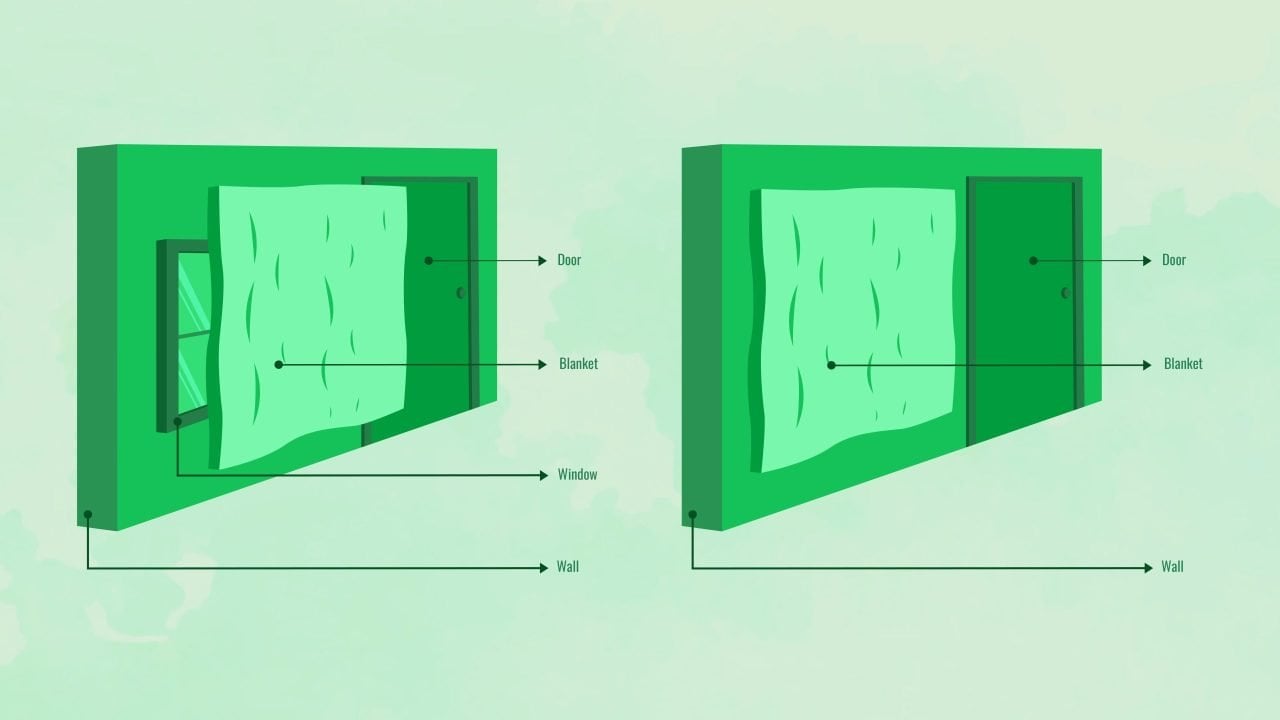
D. Tapestry
You can hang a decorative tapestry or rug on the walls like a thick blanket. This technique has been used since ancient times to soften impact noise, keep the interiors warm, and prevent echoes, it is a sure way to add sound absorption, soundproofing to a room cheaply, probably the only free way to soundproof a room.
E. Acoustic Panels
Acoustic panels and soundproofing go hand-in-hand, and they are easy to install, thanks to impaling clips or adhesives. But there are a few things you need to keep in mind before using wall panels -
- Removing acoustic panels often requires repairing the wall
- Adhesives can damage the drywall or paint, but the panels won't be affected
- Impaling clips take longer to install but don't require much maintenance
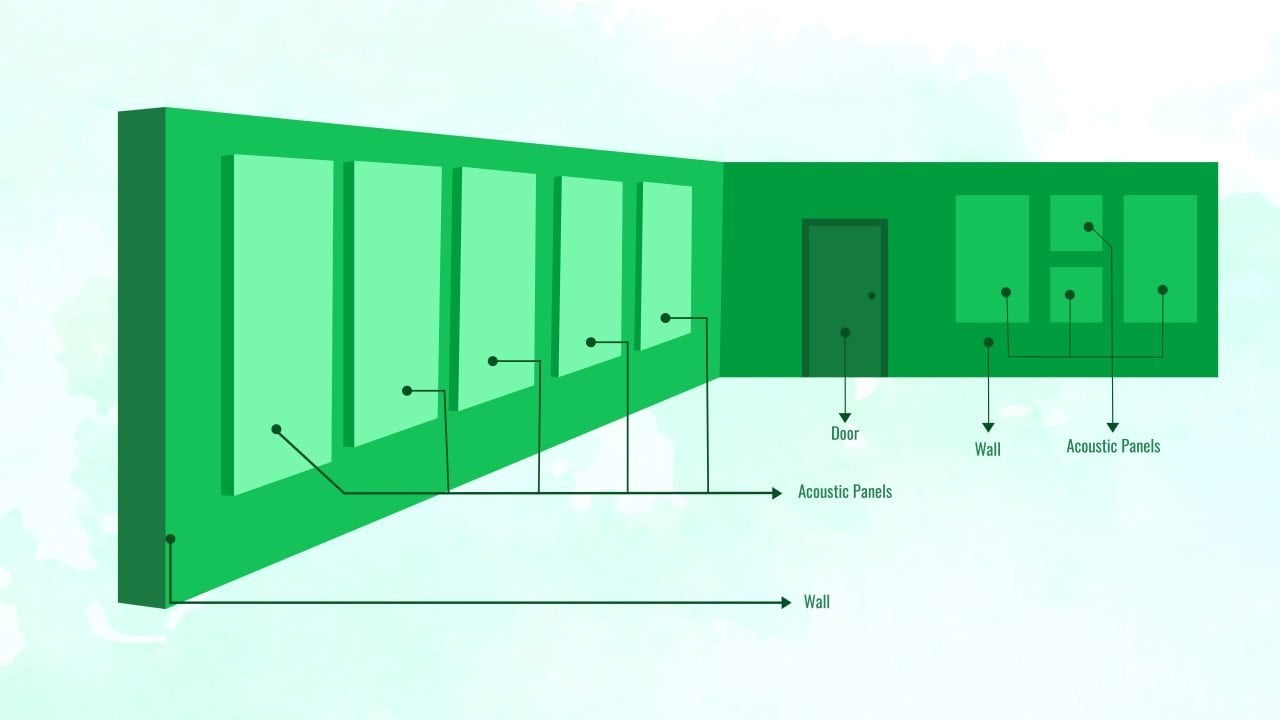
I must mention that impaling clips are metal fasteners with a flat shape, accompanied by metal prongs to hold the foam and attach it to the wall. If needed, you can also apply foam to the screws sticking out of the walls.
Usually, using impaling clips means you must only patch holes in the walls. But prior to that, apply packing tape on the panels and walls to remove the foam before applying the adhesive again to the shiny surfaces.
Note that you may still face issues with noise pollution but using this installation technique will allow you to take down the panels hassle-free.
F. Insulation
One of the best ways to make a room soundproof is by adding insulation to the walls, which isn't as difficult as it may seem.
- The first step is removing the drywall to expose the wall studs
- You can then apply fiberglass insulation, cotton batt, or other material between the studs
- The last step is replacing the drywall for sound insulation
G. Wall Frame
When you don't want to remove the drywall and reinstall it, you can add another drywall or wall frame to block the noise. This will make the room smaller but will provide a quality solution.
- Fix the wall frame to the studs
- You can also add resilient channels or sound clips to the studs
- Finally, apply a new layer of drywall over them.
For those who don't know, resilient channels are metal frames, providing greater control over sound absorption.
6. Soundproofing Ceilings
Learning how to soundproof a room would be incomplete if you don't know how to treat the ceiling to reduce sound. But fixing ceilings is easier, thanks to insulation clouds and acoustic ceiling tiles available in multiple designs and colors to enhance the interior décor.
A. Acoustic Tiles
A simple yet highly functional solution for reducing noise is installing thick acoustic panels over the existing ceiling.
B. Cloud
A ceiling cloud is best suited for tall rooms, whereby the acoustic lining or canopy cuts out the excess noise. Moreover, given the shape of the hanging structure, it has the appearance of a cloud.
Given the multiple benefits of ceiling clouds, you will find them installed in recording studios. So, if professionals prefer to use them, you certainly can. However, once again, these will only absorb the sound, and not block it entirely from traveling across the walls.
C. Soundproofing During Construction
Most people don't think about soundproofing until later, but it never hurts to be proactive. Soundproofing during the construction stage is easier and reduces the hassle of making frequent alterations -
- Before installing the ceiling, attach soundproofing material over the studs
- Apply sealant to the gaps for maximum noise absorption
- Install new drywall or patch the existing wall to cover the ceiling
7. Reducing Noise Reflection
Sometimes, the noise level increases in the entire room when you play music because it reflects off hard flooring and other surfaces. When sound bounces inside the room you need an absorbent material for sound masking the floor by reducing reflection. The thumb rule to go by is that for each doubling of absorption, the ambient sound levels will reduce by about 3dB.
So, cover the walls and ceilings with a soft material to muffle the sounds of barks, voices, or noise from a vacuum cleaner. This is where a shag rug for ceilings and rubber textile mats for the walls helps keep decibel levels down inside a room.

Most Affordable Ways To Soundproof A Room
I have highlighted several ways how to soundproof a room, but here are some affordable solutions that you can consider.
1. Window Treatments And Curtains
Curtains provide privacy while blocking outside noise, for which thick drapery and hanging plush prove useful. Moreover, they further absorb ambient noise inside a room for greater comfort.
2. Area Rugs
Area rugs are especially useful in main living rooms and or when there is much noise in an apartment. You can also add a pad under thick rugs to mask the sound further without compromising the available space.
3. Upholstered Furniture
The more upholstered furniture you have, the higher the chances of a quiet room because there are more areas for sound absorption. I have seen that sound doesn't bounce much in such rooms, so make sure to add plush pillows and thick blankets.
4. Background Noise
Even though it may feel counterproductive, there is some logic to this madness. Background noises are highly effective and affordable in making a room soundproof.
If there's something else you can listen to, such as white noise or instrumental music, you can mute or drown out other annoying sounds.
A. Sound Masking
Many people have sound machines that can produce various background noises, like rain, sounds of nature, or white noise; this is known as masking. But this is a temporary fix since such machines don't eliminate the noise entirely.
B. Air Purifier
Air purifiers help remove impurities from the air and produce enough noise to drown out surrounding sounds. You will need a medium-sized unit for the best results so that noise from the other room doesn't filter in.
C. Fans
Box fans, ceiling fans, and modular fans increase airflow and add white noise inside the room to dampen other sounds. Plus, you won't have to choose an expensive or fancy unit since the primary purpose is to generate more background noise.

How To Soundproof A Room Conclusion
After reading my guide, you can choose multiple techniques to soundproof a room effectively.
But based on your living situation, everyone may not enjoy similar results. For instance, if you live in a rented apartment, it might be difficult to get permission for construction or changes to the interior makeup of the room.
You can still use fans or sound machines to cut out unwanted noise. However, if you want a more permanent solution, ask the building contractor to add insulation to the walls before installing the drywall.
So, take your pick and make your home sound free with any of these easy methods!
Tip
When soundproofing a room, don’t forget to install air vents since they guarantee comfort and safety when working for extended periods. To make room for ductwork, you will need to measure a 6-inch hole in the wall for quiet ventilation.
